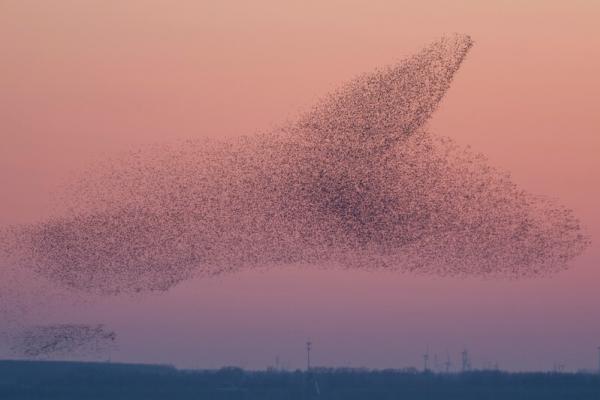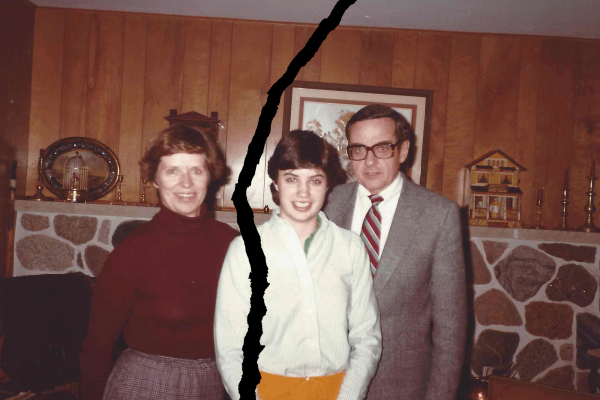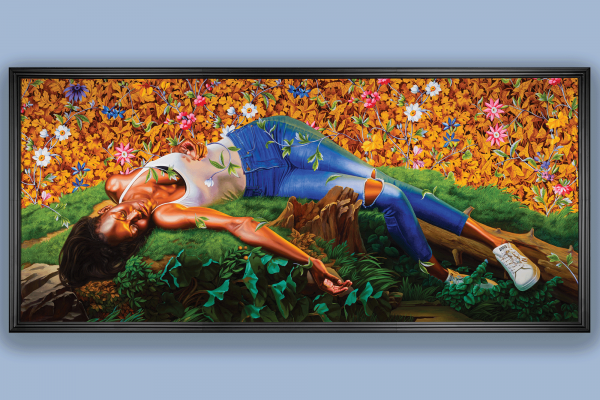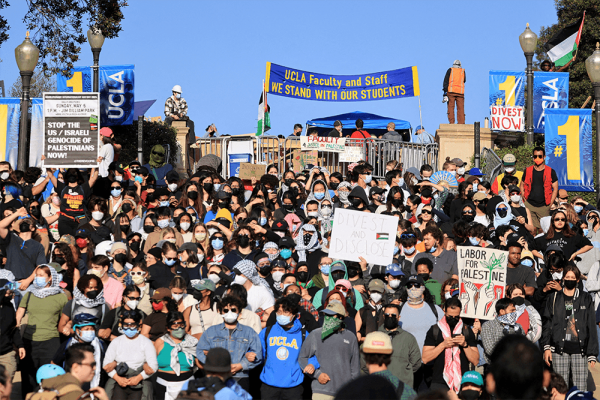I'm fond of the animal kingdom’s unseen abodes, the places where beady-eyed mammals scratch out damp compartments. When I was younger, I wanted to reach these creatures in their hollowed grounds, where dirt and clay are wired with roots and glued with fungi. In The Little Mermaid, Ariel sang, “I wanna be where the people are,” and little me responded, “I wanna be where the moles are.”
I can’t speak for other animals, but humans have a curious capacity for envisioning unknown worlds beyond our sight. The human intellect is expansive. When touched by the creative Spirit of God, we travel to unseen arenas, reaching for a vision of heaven where everything is harmonious, whole, and saturated with everlasting life. Imagining paradise is one of our greatest gifts for sustaining hope amid our current ecological catastrophes.
There are two common responses to climate fear in light of our planet’s alarming trajectory. One is escapism, which manifests as a selfish naivety that embraces a future hope of heavenly bliss and ignores the destruction around us. The other is despair, or an inability to see beyond our current disaster. I’d like to suggest a third response: an active, paradisiacal hope that doesn’t disconnect from the present world, but instead meets our planetary problems head-on.
Currently, it seems like the collective imagination for the future of the planet is a battered Earth on the brink of annihilation. Constant news of disaster paints a bleak picture of the globe in our minds — we are bombarded by images of the planet bursting into flames, coastlines drowning, and vast areas drying up and cracking. Rampant wildfires, extreme storms, floods, droughts, and desertification are all grievous parts of the contractions of creation’s “pains of childbirth right up to the present time” (Romans 8:22, NIV). The earth’s fallen state is lamentable and convicting, especially considering the destruction is the fault of humanity. But this destruction is not the final prognosis.
This Earth Day is an opportunity to hold Earth’s afflictions in view of the healing hope of the gospel. Colossians 1:20 reassures us that Christ is reconciling all of creation, “whether on earth or in heaven,” through his blood shed on the cross. The drama of the gospel narrative culminates in a stunning finale — the resurrection of our bodies and the dawn of the “new heaven and new earth” (Isaiah 65, Revelation 21). On the heels of Easter, Earth Day joins in this joyful season and reminds us to celebrate the hope of the new creation — a restored planetary home.
Terms like “paradise” and “heaven” are often interchangeable and hard to pin down. The Bible describes the first paradise, the Garden of Eden, as a planetary home perfectly “in touch” with heaven (Genesis 2:4-6). Humanity was banished from this harmonious place which led to humans approaching our relationship to the earth from an antagonistic perspective (Genesis 3:19). Yet, scripture ends with the culmination of a “new heaven and new earth,” a renewed paradise where heaven and earth will again be united.
So when I mention paradise, I’m envisioning this new creation, the restored earthly paradise that is the pinnacle of our environmental hope — and profoundly connected to this world. Avoiding an escapist mindset calls for an openness to how this current creation and the new transfigured creation are connected.
The kindred crew of earthmovers — brilliant badgers, shrewd shrews, and the like — show us how to connect earth and sky. Underground tunnels of chipmunks and moles connect their cavern homes to the world above ground like secret passageways. The current creation and new creation are joined in this way; we haven’t gotten to the fresh air and brightness of the new creation yet, but it’s where we’re headed.
The consensus of most early church theologians was that there’s a continuity between the current creation and the new creation. Ephrem the Syrian, a fourth-century saint, creatively captured the connection between the heavenly realm and the natural world through his Hymns on Paradise. In his poems on the “environ of Paradise,” he described our eternal home like this:
From their abodes
the children of light descend,
they rejoice in the midst of the world
where they had been persecuted;
they dance on the sea’s surface
and do not sink.
Ephrem wasn’t musing on paradise from a place of comfort. He lived in a small cave and entered the ancient Mesopotamian city of Edessa to serve the starving and poor until he died among them while tending to the sick during a plague. Ephrem imagined paradise as a place here on earth where the oppressed and persecuted were taken care of and rescued from poverty. Rather than attempting to escape the harm he saw around him and just wait to go to heaven, Ephrem attempted to live out his belief that this world would one day be restored. That is full redemption.
The Christian belief in a restored creation strengthens us to face the present state of an afflicted people and planet, teetering on destruction. We respond to the urgency of the moment now because if we don’t, real pain and suffering will be the consequence for us, our neighbors, and future generations.
We step in to repair homes destroyed by extreme weather, send relief to towns demolished by wildfires, restore local wetlands to prepare for future floods, and hustle to reduce our emissions. We hold multinational corporations accountable for the overwhelming percentage of global emissions, work to reverse unfair housing policies that keep marginalized communities near polluted environments, and invest our time in advocating for policies that make renewable energy options available and affordable for everyone. Like Ephrem, our environmental and social activism is a tangible display of our hope for a new “new heaven and new earth,” made possible by the one who promised, “See, I am making all things new” (Revelation 21:5).
For now, paradise is a hidden home. Like a red fox’s den veiled by leaves or a pika’s burrow concealed by dirt, we don’t see paradise in its fullness yet, but we can look for subtle hints of its glory behind each flowering tree, rock, gemstone, star, cloud, city, and suburb. The current natural world acts as a mirror to paradise, a starting point for a transfigured view.
Our hope is not in imagining a heaven detached from the destruction of this planet, a thinly veiled wisp of a projection of angel dust and beds made out of cloud. Our hope is intricately bound up in a liberated creation. For Earth Day, let’s take time to meditate on scripture's most earthy passages and reframe how we envision a restored earthly paradise to encompass all of creation (Psalm 148). When we’re looking for hope amid environmental despair to sustain our work, here’s permission to picture the embodied reality of the planet’s future. Picture paradise.
Got something to say about what you're reading? We value your feedback!







